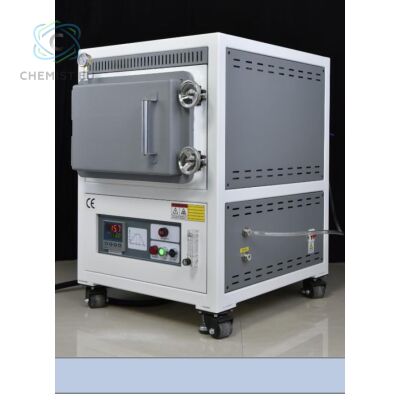What is a lab furnace used for?
Published on November 23, 2023
What is a lab furnace used for?
Laboratory furnaces, which have a key role to play in testing and experimentation, are heating devices that are indispensable for a multitude of applications. This equipment is diverse and design, with features that need to be well understood when selecting the best option.
In industry and education, laboratory furnace are indispensable tools. They are used in various spheres of production, intended for heating parts to a given temperature, calculation, roasting, hardening, and melting of various metals and alloys. These devices also find their application in the processing of clay products.
Lab furnaces operate using either gas or electricity. Their heating capacity can range from 4000 to 18000 degrees Celsius. The working chambers of this equipment have a volume from 3.5 to 120 liters, the choice of a specific volume depends on the conditions in which they will be used.
These devices can be installed either on the floor or on a table. High-temperature versions of laboratory furnaces are designed for synthesizing valuable ceramic products and melting glass.
Manufacturers use specialized fiber materials to create these furnaces, ensuring a fast heating and cooling process. The bodies of laboratory furnaces are made of stainless steel. A variety of models take into account vertical and horizontal loading. Hooded, tubular and muffle versions of laboratory furnaces are an integral part of laboratories.
Laboratory furnace operation
Usually, customers prefer models of lab furnace with the central part contains a coal pipe – it is this pipe that acts as a heater. The principle of operation of coal furnaces is as follows: substances requiring heating are placed inside the tube. An electric current flows through shoes applied to the pinched ends of the tube.
Coal furnaces are capable of heating up to 1,700 degrees. However, it is important to consider that without a protective atmospheric shield, the furnace can fail quickly. The voltage in the tube ranges from 20 to 30 volts due to its large cross-section and low resistance. Because of this feature, the power transformer is placed in the same enclosure as the ore. This ensures the desired conductivity.
Special furnaces with molybdenum or tungsten heaters are introduced to avoid carbon saturation when using carbon heaters.
Structurally, laboratory furnaces are usually divided by a partition into two parts. The upper part contains the heaters and the lower part contains the control system including a lamp for signaling, regulators and a switch, as well as a device for temperature control. If a heater fails, it can be quickly replaced inside the furnace.
Laboratory furnaces features
The possibility of heating to any temperature in the range up to 3000 0C due to the use of special heating devices and modern technologies.
- Uniform heating due to forced air circulation technologies inside the chamber.
- Durability provided by the use of durable materials and refractory coating in the construction of furnaces.
- Safety due to automated control and the implementation of overheating and overload protection systems.
Laboratory furnace applications
They accelerate chemical reactions, heat various materials to the melting point, and heat treat products. They are used in laboratories of various profiles and in production in the chemical, food, electronic, construction industries, metallurgy, etc. It can be used in a wide range of applications.
Depending on the modification, they allow solving a wide range of tasks and can be used:
- For synthesis of various substances.
- Chemical and thermal processing of raw materials.
- Casting and remelting of metals and their alloys.
- Heat treatment of building materials (ceramics, clay, etc.).
- Glass hardening.
- Processing of food products.
In general, the range of application of this type of equipment is quite wide. Such furnace is used not only in industrial laboratories, but also in educational institutions.


